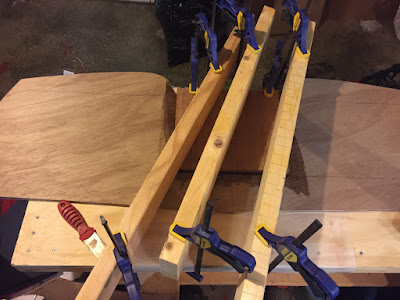 |
| After a little goof from over cutting the first notch, I started clamping a fence into place for the 90° cuts. |
 |
| The 12° cut is for the keel. |
Decisions, decisions...
 |
| After a little goof from over cutting the first notch, I started clamping a fence into place for the 90° cuts. |
 |
| The 12° cut is for the keel. |
 |
| Why a sanding block instead of a power sander? Because the power sander blows this wood dust everywhere. |
 |
| Sweep it up with a brush... |
 |
| Scoop it up with a squeegee... |
 |
| ...and collect it for future use. |
 |
| Almost there. |
 |
| Checking the top of the motor board to make sure it's perpendicular to the center line. |
 |
| Making sure I'd gotten the U-shaped dip out of the motor board. Not perfect, but very close. |
 |
| Trimmed edge along the port-side top. |
 |
| Trimming these curves in the transom cutout was a pain. |
 |
| Attaching the motor board, using multiple clamped 2x4s to press the motor board firmly into place. |
 |
| Attaching the floor beam and frame sides. |
 |
| Transom frame sides, marked for Starboard and Port |
 |
| Beginning to trim the edges on my Zip transom. |